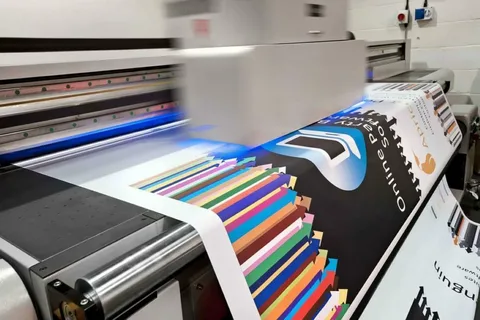Digital printing technology has revolutionized the printing industry. Are digital printing businesses on the rise? The short answer is yes. In recent years, digital printing has become a popular choice for businesses of all sizes, especially small to medium-sized enterprises (SMEs). In this article, we will explore the current state of the digital printing industry, its advantages and disadvantages, market trends, costs and considerations, best practices for running a successful digital printing business, successful case studies, the impact of COVID-19, and predictions for the future of digital printing businesses.
The Evolution of Printing Technology: From Traditional to Digital Printing
Traditional printing methods such as offset printing and letterpress printing have been in use for decades. Offset printing involves the creation of a printing plate that is used to transfer ink to paper. Letterpress printing is a manual printing method that involves pressing characters or images into paper using a printing press. Digital printing, on the other hand, uses digital information to print images or text directly onto various surfaces without the need for a printing plate. Digital printing methods include inkjet printing, laser printing, and dye-sublimation printing. Digital printing differs from traditional printing in its ability to print-on-demand, in smaller quantities, and with more flexibility in terms of customization options.
Advantages and Disadvantages of Digital Printing for Businesses
Digital printing has several advantages over traditional printing methods. Firstly, digital printing eliminates the need for printing plates, which reduces setup time and costs. Secondly, digital printing allows for print-on-demand, which means businesses can print smaller quantities of printed materials, reducing storage costs and waste. A good example of that are name cards. Thirdly, digital printing can provide higher quality prints with greater flexibility in terms of customization options. However, digital printing also has its disadvantages. The cost per print can be higher than traditional printing methods for large print runs. Paper options may be limited compared to traditional printing, and digital printing may have a shorter shelf life due to the quality of ink used.
Market Trends: Growth and Opportunities for Digital Printing Businesses
The global digital printing market is forecast to grow at a compound annual growth rate (CAGR) of 5.48% from 2020 to 2026, according to a report by Mordor Intelligence. One of the key drivers of this growth is the increasing demand for the personalization of printed products, which digital printing can facilitate. Additionally, the advent of new technologies in digital printing, such as 3D printing, is expected to enhance the growth of the industry.
Investing in Digital Printing Equipment: Costs and Considerations
When investing in digital printing equipment, businesses should consider the upfront costs, maintenance costs, and the range of available features. The cost of digital printing equipment can range from a few thousand to hundreds of thousands of dollars depending on the requirements of the business. Some of the key features to consider when purchasing digital printing equipment include printing speed, print quality, and the range of available materials.
Best Practices for Running a Successful Digital Printing Business
To run a successful digital printing business, businesses should focus on providing high-quality prints, excellent customer service, timely delivery and competitive pricing. The adoption of automation tools for workflow management and marketing is essential for enhancing efficiency and productivity. Additionally, investing in employee training and staying up-to-date with new technologies in the industry is crucial for staying ahead of the competition.
Case Studies: Successful Digital Printing Companies and Their Strategies
Several digital printing businesses have successfully implemented strategies to enhance their businesses. For instance, Moo.com, a digital printing company, has adopted a customer-focused approach by providing custom business cards and custom stickers with various designs and finishes. Another example is VistaPrint, which offers a range of digital printing services and has integrated technology to support its customer’s printing needs.
The Impact of COVID-19 on the Digital Printing Industry
COVID-19 has had a significant impact on the printing industry, including the digital printing sector. There has been a shift towards online orders, which has increased the market for digital printing. Additionally, some digital printing companies have changed their focus to providing products that cater to customers’ changing needs, such as personal protective equipment (PPE).
Future Prospects: Predictions for the Future of Digital Printing Businesses
The future of digital printing businesses is promising. The increasing demand for customization and personalization of printed products is expected to enhance growth in the industry. The advent of new technologies such as 3D printing is expected to broaden the range of products and services available.
Tips for Entrepreneurs Starting a New Digital Printing Business
For entrepreneurs starting a new digital printing business, it is essential to conduct market research, identify a target market, and make a detailed business plan. Additionally, entrepreneurs should focus on providing high-quality prints, excellent customer service, timely delivery, and competitive pricing to establish a reputation in the industry. In conclusion, digital printing businesses are on the rise due to various factors such as the increasing demand for customization, personalization of printed products, and technological advancements. Businesses can benefit from the flexibility and cost-effectiveness of digital printing, but they need to be aware of the limitations and costs involved. By adopting best practices, staying up-to-date with the trends and developments in the industry, and investing in employee training and equipment, digital printing businesses can stay ahead of the competition and continue to thrive in the future.





